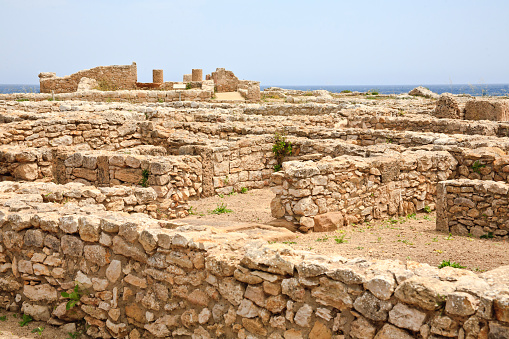If you haven’t seen the previous post on this subject, here you go: https://esoterichistory.com/how-did-people-sacrifice-to-the-gods-in-the-past/
In it, I covered the sacrificial traditions of the ancient Greeks, ancient Romans, and ancient Egyptians. In this post, I intend to cover the Punic peoples–Phoenicians, Carthaginians, and what have you.
Sacrificing
One of the primary ways to worship is to create offerings and perform sacrifice. Deities throughout history have accepted all kinds of sacrifices.
Some forms of sacrifices are public, performed by the community. But there are also private sacrifices as well that are performed in more of a one on one manner.
This is all information covered in the previous post, but I am reiterating it as a reminder.
First: Who Are The Phoenician Gods?
The Phoenician gods existed all over the land of Canaan as part of the Canaanite religions. They had quite a number of deities, but at the top was the god El and the goddess Asherah.
The exact cosmology is rather unknown, because the earliest texts we have managed to find–which come from the city of Ugarit–have revealed any cosmology. We have some ideas, but they come from reconstructions made by Philo of Byblos–after Greeks and Romans had influenced the area heavily.
According to Philo, he received three texts from his predecessor–a Phoenician author named Sanchuniathon who lived in ancient Beirut–which detailed a pantheon called ‘Children of El’ which is supposed to be what the people of Ugarit believed. This pantheon showed the creator to be a deity named Elion who fathered all divinities and was married to the city Beirut.
This idea of a deity being married to a city is something common across Canaan. The god Melqart is married to the city of Tyre, the god Chemosh is married to the city of Moab, YHWH is married to the city of Jerusalem, and even in Carthage–Baal Hammon is married to the city of Carthage.
Carthage was an empire in the western Mediterranean created by the Phoenicians that became independent of them and eventually came to dominate the Mediterranean Sea until they were beaten and conquered by the Romans. Carthage inherited the culture, language, and religion of the Phoenicians but also added their own twists to it such as their own deities.

What Was Sacrificed To Canaan’s Gods?
The Canaanites built shrines for sacrifices, and usually they would make figurines of the deities being represented at those shrines. This gives us some ideas of what the Canaanites thought their deities appeared as and many of these shrines were put in specific places such as on hilltops or in clearings surrounded by trees.
At these shrines, archaeological work has been able to determine that for roughly around 5,000 years, sacrifices of animals such as donkeys, sheep, and goats were commonplace. However, sacrifices of donkeys became the most frequent after the Bronze Age.
In addition to being sacrificed at the shrines, it appears that the ancient Canaanites also sacrificed animals in other ways to obtain divine favor. Excavation under some old homes in the region have found entire donkeys buried beneath the foundation of the house and it is believed that this was a method of sacrifice that was performed onto new buildings in order to give benefits to the new place.
Unavoidable when speaking about the Phoenicians and the Canaanites is the question of human sacrifice, and especially the question of child sacrifice. It is true that human sacrifice most likely occurred among the Phoenicians and the Carthaginians, though we do not have great documentation of it.
However, the human sacrifice allegations and the child sacrifice allegations all come from sources that are neighbors–and sometimes enemies–of the Punic civilizations. The Hebrews who tried to monolatrously oppose worship of the Canaanite deities and the Romans who were the rivals and destroyers of Carthage do not seem to be the greatest sources to take complete advice from on what these ancient peoples believed.
The issue is, they are all that we really have. Texts from the people themselves do not mention any such types of sacrifices, but there are also just not nearly enough texts from the Phoenicians or Carthaginians to begin with to compare at full length.
At most, what we can do now on this matter is pure speculation. Supposed evidence at one time came from the findings of an ancient cemetery in Carthage that was full of the remains of children, however, the archaeological findings suggest these are all children who specifically died stillborn.
Another challenge has come from the finding of cremation in Carthage, particularly cremated children, but it appears the Carthaginians used cremation on those who died of sickness and this was applied to all–not just to children.
The prevalence of mentions to human sacrifice throughout Roman, Greek, and Israelite texts does give the impression that something probably had to have happened, but there just isn’t enough evidence to really support the claims. Please do not go sacrificing any children to Baal, just sacrifice a donkey or a goat.